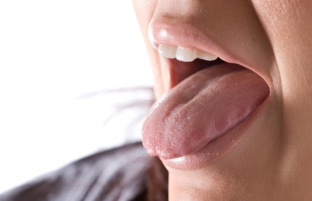Sialadenitis, or inflammation of the salivary glands, can develop due to various causes, including bacterial diseases (pneumonia, typhoid, dysentery) and viral infections (cytomegalovirus, SARS, influenza, Epstein-Barr virus). In winter, when the population is more prone to colds and flu more often, patients often turn to the dentist with inflammation of the salivary glands, the cause of which is a flu infection. How inflammation of the salivary glands manifests itself in influenza and how to treat it, read on estet-portal.com.
Pathogenesis and mechanism of development of inflammation of the salivary glands
Acute inflammation of the salivary glands during influenza begins in one gland, then passes to the second. The process develops quite quickly, and after a couple of days, purulent fusion of the salivary gland may occur, which ends with its necrosis. The most common localization of sialadenitis in influenza infection is the parotid gland. Sometimes inflammation of the salivary glands begins after vaccination against the influenza virus. Sialadenitis affects the interstitial tissue of the gland.
What are the symptoms of inflammation of the salivary glands with influenza?
With the development of inflammation of the salivary glands, patients complain of pain when turning their heads and opening their mouths. At the same time, the edema spreads to the parotid-masticatory region and the upper part of the neck. Palpation within the anatomical boundaries of the parotid gland is determined by a dense painful infiltrate, which has a smooth surface. If the submandibular gland is inflamed, patients are worried about pain when swallowing. In this case, the submandibular and sublingual areas are swollen, the swelling extends to the chin area and upper neck. With bimanual palpation, the localization of the process in the submandibular gland is well defined: it is possible to determine a dense, painful and mobile gland with a smooth surface.

Signs of inflammation of the salivary gland in the sublingual region:
- patients with acute inflammation of the sublingual glands feel pain when moving the tongue;
- there is a feeling of enlargement of the sublingual folds;
- on examination, the oral mucosa over the sublingual gland is grayish in color;
- mucosa is quickly destroyed, and necrotic tissue of the gland is rejected;
- with multiple lesions of the salivary glands, small salivary glands may also be involved in the process.
Treatment and prognosis in the development of inflammation of the salivary glands
In the initial stages of inflammation of the salivary glands, interferon is used by irrigating the oral cavity several times a day. If the inflammation of the salivary glands has developed a second time, has a purulent character, then antibacterial drugs are injected into the ducts of the salivary glands. In the presence of an inflammatory infiltrate in the gland, novocaine blockade is effective. If the process is purulent-necrotic in nature, it makes sense to make an incision in the capsule of the gland.
Also, when treating with saliva a gland that has become inflamed due to an influenza infection, one should not forget about the treatment of influenza itself, taking measures aimed at strengthening the body. A balanced diet rich in vitamins, plenty of warm drinks, bed rest and good sleep can speed up the healing process.
With inflammation of the salivary glands due to influenza infection, the process has a favorable outcome. Complications are possible with the formation of scars in the ducts, their infection. Also, the option of stopping salivation in case of necrosis of a part of the gland is not excluded. An inflammatory infiltrate may persist for a long time in the salivary gland.
In general, the process does not pose a danger if it is detected and treated in a timely manner. If a patient has such complaints, it is important to recommend an examination by a dentist before sending him to an otolaryngologist.







Add a comment